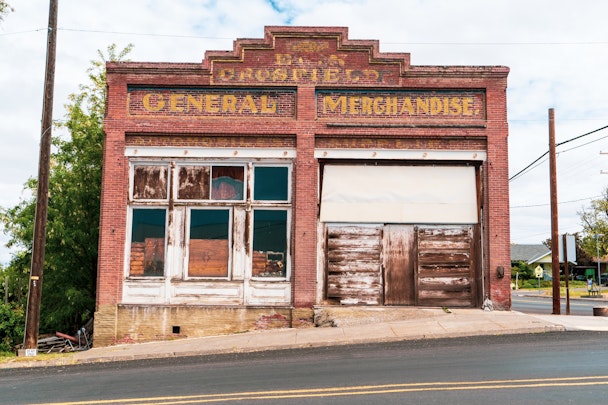‘Shallow living’ and plummeting attention spans: Existential threats for retailers?
What do Rihanna and Chinese tech giant Alibaba have in common? They’re both tackling information malaise and drifting attention spans in smart ways, says VMLY&R Commerce’s Gemma Spence for The Drum’s retail deep dive.

'Shadow living' and 'infobesity': How can retailers overcome shopper malaise? / Dan Meyers via Unsplash
Chances are, you won’t get to the end of this article. I won’t take that personally. Attention spans and reading habits have declined for decades. The average time focused on a task at work has shrunk from 150 seconds in 2004, to 75 seconds in 2012, to around 47 seconds today. 57% of Americans haven’t read a single book in a given year, and when people turn to digital, they spend an average of 5.59 seconds looking at written content on a web page.
So, at best, you’ll be skimming and scanning before skipping this post. This is how we live our lives; bloated by ‘infobesity’, consumed by screens for an average of 10 hours per day, operating in a state of continuous partial attention. While that is frustrating for a writer, and a concern for humanity, it’s deadly for a commerce marketer.
I call it the ‘shallow living conundrum’, where consumers skate over the surface of life, superficially engaging with the content and commerce opportunities we provide them. In a world of infinite choice – of channels, of products, of everything – we rarely stop and ‘go deeper’.
Yes, retail is facing many challenges – economic, technological, and environmental. The crisis of collapsing attention is just as real.
But there is a solution. Or in fact, two solutions.
Advertisement
Solution 1: Brand growth and digital availability
Firstly, as I wrote recently, marketers need to expand the concept of brand growth popularized by Byron Sharp, from ‘mental and physical availability’ to digital availability. That means being there online, wherever and whenever shoppers want to purchase, however they want to do it. Sounds straightforward, but it requires omnichannel retail strategies, along with new growth models such as voice, social and visual commerce (and whatever is next), and direct-to-consumer (D2C) approaches. The broader and deeper the distribution, and the easier it is to buy, the better.
If digital availability enables commerce, digital complexity kills it. In D2C, we see a 30% drop in traffic for every additional click. In product detail pages (PDPs), the trend is toward fewer words, more images, and more ‘snackable’ content. PDP videos that used to be several minutes are now between 15 and 30 seconds. Ad formats are becoming shoppable and integrating the checkout, so you don’t even have to click through to a site.
Digital availability must capitalize on the functional aspects that help brands stand out (strong digital and retail media presence, great customer experience), as well as the emotional features of a brand (its distinctive assets and how it engages).
Advertisement
Solution 2: Creativity, creativity, creativity
Which brings me to my second point. I believe that creativity will be the core ingredient to help brands stand out in the future, regardless of the shelf – physical, digital, or connected. By ‘creativity’, I mean insight-led content that instantly engages its audience in a relevant way, and nudges toward a transaction.
Creativity should follow three Cs: conversion-led, clever in message and/or medium, and culturally connected. Creative commerce can be as broad-reaching as a new approach to couponing, or a breakthrough payment system.
Listen to Rihanna
In this shallow living era, it’s how you employ creativity and digital availability that makes the difference. My favorite example this year is from one of the world’s best ‘chief marketing officers’: Rihanna.
Picture yourself watching the Super Bowl in February this year. You’re on the couch, phone in hand, scrolling TikTok. Rihanna comes on for the half-time show, and you pay more attention. Suddenly, Rihanna pauses, for just three seconds, and touches up her make-up – her own brand, Fenty Beauty. Instantly, you Google ‘what make-up is Rihanna using’, and you’re directed to Fenty.com to purchase. Searches for Fenty Beauty rose by 883% during the performance and the media value was US$5.6 million. The message was short (three seconds), sharp, connected, and digital… and it got our attention and sold product.
Suggested newsletters for you
The ultimate walled garden
China knows how to combat shallow living; the e-commerce sun rises in the East and sets in the West. Alibaba has created an ecosystem, from YouKu (like YouTube), to shopping platforms Taobao and T-Mall, to livestreaming with Taobao Live, to payment solutions like AliPay and even travel companies like Fliggy. The idea is to create an Alibaba walled garden (if you bounce, you just bounce to another Alibaba property), and Amazon is starting to follow suit in the West.
Alibaba also aims to make the shopping experience irresistibly entertaining, through gamification and live streaming. This is showing up in other markets too, on platforms like Twitch and Amazon Inspire.
Shallow living will only become shallower. The key is not to fight the tide, but swim with it. By being ‘digitally available’ and executing creatively, you make it easy for shoppers to find, engage and buy from you.
Now, are you ready to chart the course toward sustainable growth in the new era of modern commerce? If you have got this far in the article, you’ve proven that and more. Thank you for paying attention.
Get ready for the retail world of the future with more smart thinking and detailed analysis over at our dedicated deep dive hub.
Content by The Drum Network member:

VML
VML is a leading creative company that combines brand experience, customer experience, and commerce, creating connected brands to drive growth. VML is celebrated...
Find out more
